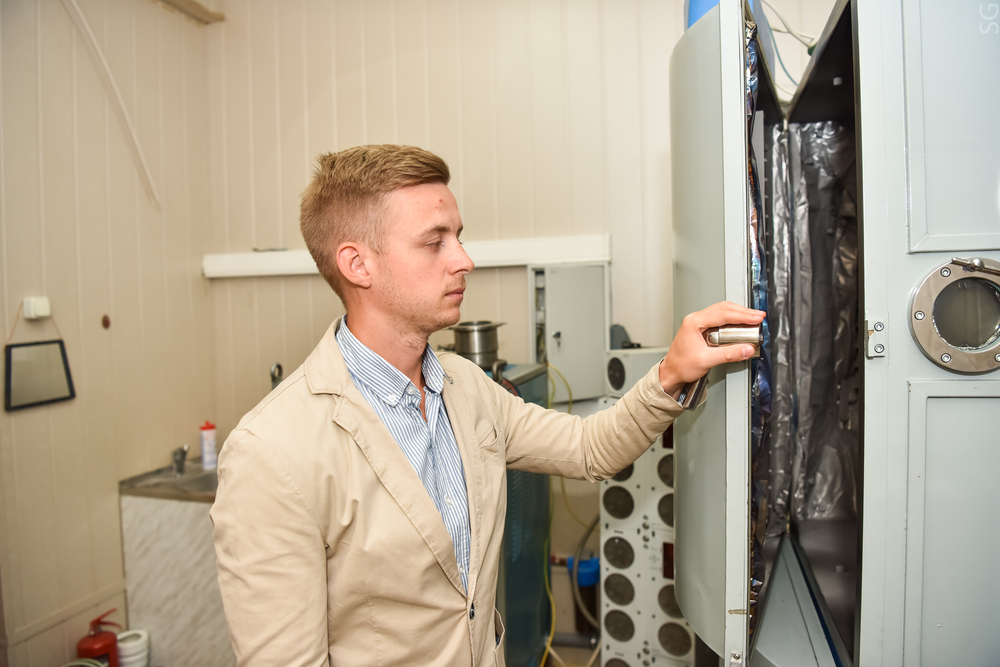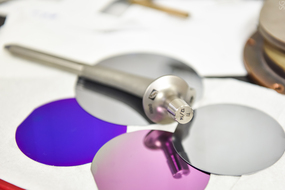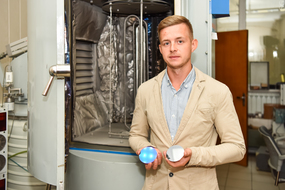Scientists from NUST MISIS developed a bioactive coating for titanium implants that can completely destroy bacteria. Its special porous structure with bioactive components in its composition would accelerate the implant’s survival, and the combinatorial action of active oxygen forms and silver ions will ensure the effective destruction of various bacterial strains. An article about the development is published in the international journal Applied Surface Science.
The two main problems in implantation surgery are the slow survival of the implant and the risk of bacterial infection at the site of its installation. It is possible to speed up survival by using a bioactive material that stimulates the division of osteoblasts, the patient’s bone cells. The infection is fought with the help of antibiotics, but the bacteria quickly develop resistance to them. This problem requires the creation of new effective ways to fight infections, for example, the use of metal ions known for their bactericidal activity or the ability to generate reactive oxygen species (harmful to bacterial membranes).
Most modern implants are made of titanium, as it is strong, bio-inert and not subject to corrosion. However, titanium does not have bioactive and antibacterial properties, and that is why scientists are actively working on creating coatings that eliminate these disadvantages. Titanium oxide film (TiO2) demonstrates good results: because of its porous structure, it is most suitable for bone cell division, and the inclusion of calcium (Ca) and phosphorus (P) in its composition provides bioactivity. However, it is still an important task to endow the implant with antibacterial properties.
Scientists from NUST MISIS Scientific-Educational Center for Self-Propagating High-Temperature Synthesis developed a coating for titanium implants based on titanium oxide with nanoparticles of silver and platinum. The material allows to accelerate proliferation, that is, active cell division by an average of
“To create a titanium oxide film, we used various electrolytic solutions with varying amounts of calcium and phosphorus — the ‘native’ components of natural human bone. As a result of the experiment with three different electrolytes, samples with an optimal composition (Ca = 6.3 and P = 4.8 at.%) were selected, on the surface of which it was possible to obtain a structure with a relatively uniform pore diameter from 0.7 to 2.3 µm. This structure is already favorable for the reproduction of osteoblast cells — this was verified after holding samples in a solution that is close in composition to blood plasma. We formed metallic nanoscale particles on the surface by implanting platinum (Pt) and silver (Ag) ions in the coating in a vacuum chamber”, Viktor Ponomaryov, main author and post-graduate student of the Department for Powder Metallurgy and Functional Coatings, comments.
Penetrating to a depth of about 30 nm in the sample, individual ions formed atoms. As a result of the high concentration of atoms in this layer, some of them came to the surface of the implant and formed silver and platinum nanoparticles. Silver on the surface is already independently able to provide an antibacterial effect due to its ions. But there is a limit to their concentration above which toxic properties may appear. Platinum as an element does not have any bactericidal properties. The presence of Ag and Pt as nanoparticles on the surface of titanium oxide gives the material catalytic properties. As a result, under normal light and UV radiation, coatings are able to generate a large amount of reactive oxygen species that destroy various bacterial strains.
To test the antibacterial properties of the material, samples were placed in nutrient medium with different strains of E. coli and Staphylococcus aureus. The results obtained allowed to conclude that the synergistic effect of silver ions and reactive oxygen species allows to quickly and effectively eliminate any bacterial infection without threatening the patient. Samples with platinum nanoparticles destroy bacteria only due to reactive oxygen species.
In the future, scientists plan to continue experiments to increase the bioactivity and bactericidal properties of implants. In particular, it is planned to saturate the open pores of titanium oxide with antibiotics, artificial blood and peptides.





